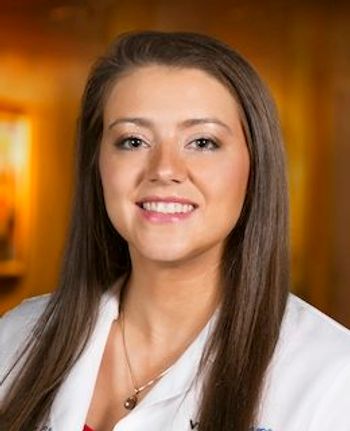
ASCRS 2023: Signs of progressive keratoconus in the hair and eyes
Speaking at the American Society for Cataract and Refractive Surgery annual meeting in San Diego, Marcony Santhiago, MD, points out there are subtle differences in patients with keratoconus that was progressing compared with patients whose disease was stable and healthy control subjects.
Marcony Santhiago, MD, Professor of Ophthalmology at the Federal University of Rio de Janeiro and the University of Sao Paulo, Brazil, reported that patients in which keratoconus is progressing have distinct differences from patients in whom the keratoconus is stable, that is, a higher concentrations of interleukin (IL)-6 and hair cortisol.
Santhiago and colleagues conducted a prospective, observational, comparative study of patients with keratoconus that was progressing, keratoconus that was stable, and healthy control subjects.
The goal was to determine the IL and cortisol concentrations in patients with progressing keratoconus, regardless of the keratoconic stage compared with stable eyes and healthy controls.
The authors also wanted to determine the correlations between the IL and cortisol and the structural damage, ie, increased curvature and stromal and epithelial thinning, Santhiago explained.
Tear samples were obtained and the concentrations of the tear cytokines: IL-1B, IL-6, IL-8, IL-10, IL-12p70 and tumor necrosis factor α (TNFα) were measured.
The study also measured cortisol concentrations in 3-cm hair samples that wereobtained most proximal to the scalp, which would represent the cumulative cortisol secretion during the 3-months before the hair samples were obtained.
Differences manifested by progressive disease
A total of 74 patients (136 eyes) were included.
The authors reported finding significantly increased levels of IL-6 in patients with progressive keratoconus in contrast to eyes with stable disease (6.59 ± 3.25 pg/ml vs. 4.72 ± 1.91pg/ml; p<0.0001).
The other IL levels and TNFα were similar between the groups.
The investigators also found a moderately positive correlation between IL-6 and the steepest keratometry (K2) value (Pearson +0.46; p<0.0001).
The patients with progressive keratoconus also had significantly higher hair cortisol concentrations than patients with stable keratoconus (0.624 ± 0.160 ng/mg vs. 0.368 ± 0.0647 ng/mg; p< 0.0001) and healthy controls (0.624 ± 0.160 ng/mg vs. 0.351 ± 0.0896 ng/mg; p<0.0001). The hair cortisol concentrations did not differ significantly between the healthy controls and the patients with stable keratoconus.
A significant correlation was found between hair cortisol and K2 (Pearson=+0.74; p<0.0001) and between IL-6 and hair cortisol (person= +0.38; p< 0.0001).
“Eyes that have progressive keratoconus have an even higher concentration of IL-6 and cortisol compared to patients with stable keratoconus, regardless of the disease stage,” The study concluded. “Second, there was a significant correlation between this increase in IL-6 and cortisol with structural damage. Monitoring this molecular information will allow earlier detection of progressing keratoconus.”
Newsletter
Want more insights like this? Subscribe to Optometry Times and get clinical pearls and practice tips delivered straight to your inbox.


















































.png)


